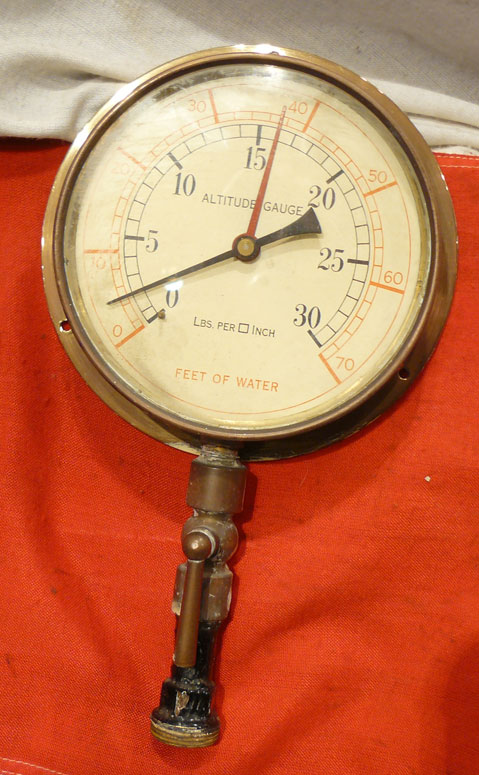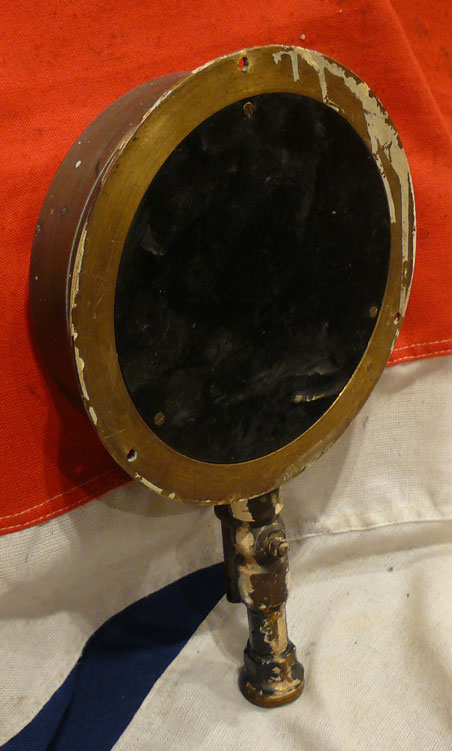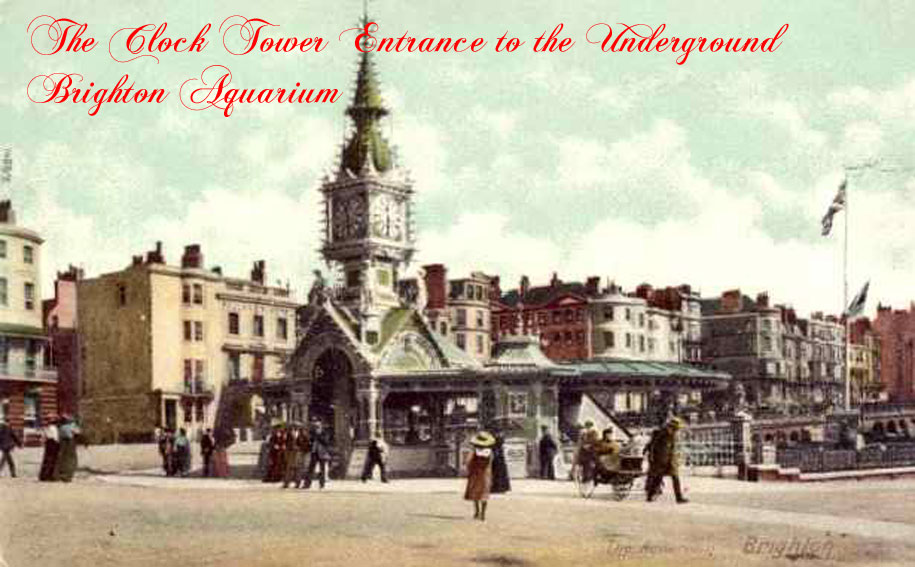Antique Brass Pressure/Steam Gauge From The World's Oldest Aquarium
A piece of Victorian public attraction history. We are fortunate to acquire a few old Victorian steam gauges, due to the refit of the world's oldest working aquarium in Brighton, now called the Sea Life Centre, and the largest in Britain. The main aquarium hall was some 70 metres long, a feat of Victorian engineering that housed a Victorian tea room and wondrous exhibits. First unveiled in 1872, the Aquarium was designed by Eugenius Birch, the man behind Brighton?s West Pier, at a cost of ?130,000. One exhibit was a recreation of Captain Nemo's Nautilus, the legendary submarine, these gauges were part of the display, that has now been removed due to the restoration programme. One hundred years ago the Brighton Aquarium was acclaimed as being the largest and most imaginative Aquarium in the world. People came from far and wide to see the new sea world. The idea to build the greatest Aquarium in the world came from a London architect and designer of marine piers, Eusebuis Birch. Brighton, on the south coast, with splendid hotels and a new railway link to London, seemed the ideal choice. A site facing the West Pier, which he had already designed, was the first choice but the ultimate decision was for a building at the west end of a new road now known as Madeira Drive, where once stood a toll house for the famous Chain Pier. Before any work could commence it was essential to obtain permission from the local authorities and from Parliament. The first of several Acts of Parliament for the project received the Royal Assent on July 12th 1869 and work start immediately. The estimate for the building involved a sum of ?100,000, further increased to ?133,000 the following year. Because buildings were not allowed to rise above the Marine Parade, a great deal of excavating was carried out. Facing stones used in the protecting sea wall came chiefly from blocks that made up the original Blackfriars Bridge, London.
The courtyard had five terra-cotta arches supported by pillars enriched with carvings of mermaids, sea nymphs and other marine symbols. In the large entrance hall and lining the 224ft. long corridor, were the fish tanks in archways leading up to a vaulted ceiling, supported by columns of polished red Edinburgh granite, and green serpentine marble, with pillars of Bath stone and a mosaic flooring. The somewhat subdued light coming from inside the tanks, controlled to suit the environment of the marine life inside, gave an impression of mystery and excitement, almost as though one was deep under the sea, looking into the strange world of fishes.
The wide corridor led to a conservatory which had an attractive grotto complete with a cascade of water. Later this became a popular meeting place. Although the building was far from ready, it was decided to open on Easter Saturday 1872. with the idea that the official opening would take place during August, when the premises would have been completed. Queen Victoria's third son. Prince Arthur, arrived that Easter, in Brighton, with Prince Edward of Saxe-Weimar. The Royal Party expressed a wish to see the new Aquarium and it was necessary to carry out immediate work on the roadway in order that the Royal Party and their ladies could enter the Aquarium without sinking up to their ankles in mud. With flags flying, the Princes enjoyed their visit. Pausing "ever and anon" to view the interesting specimens. The Press described this impromptu opening as "very propitious" and "It could scarcely have entered the minds of any of the most sanguine of the Aquarium directors that its opening would be attended by a Prince of the Blood Royal. On August 10th 1872 the Mayor, Sir Cody Burrows, declared the premises open, despite great problems with contractors, a difficult site, the sea and the weather, plus many battles with Parliament and Brighton Council. The Aquarium Clock Tower became famous all over the world and picture postcards
of its familiar facade sold in their thousands.
Code: 15833
110.00 GBP




